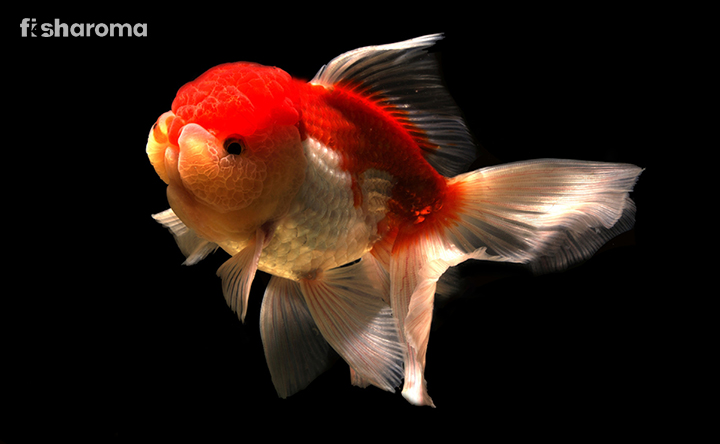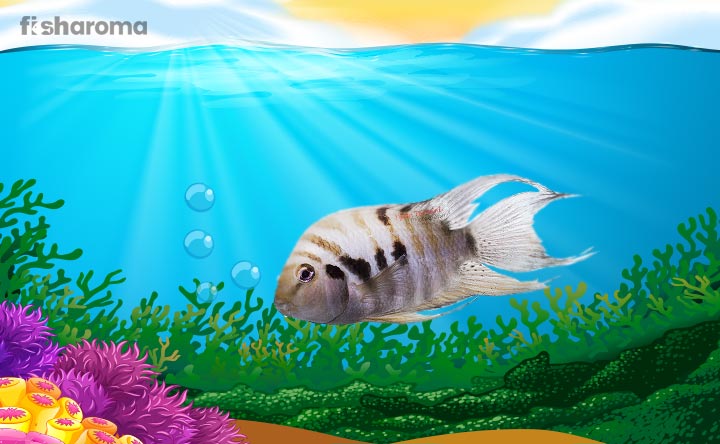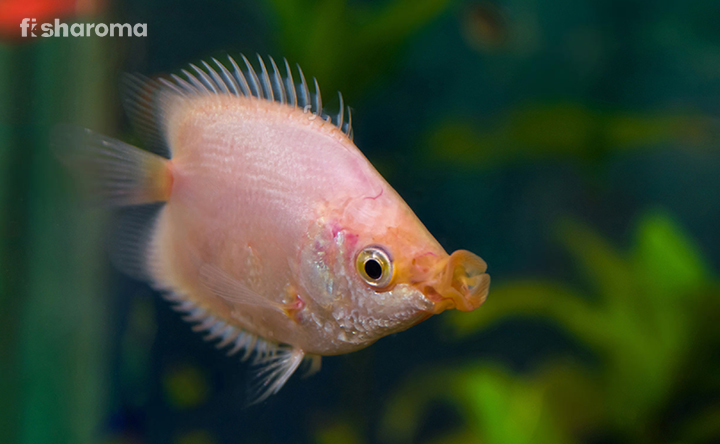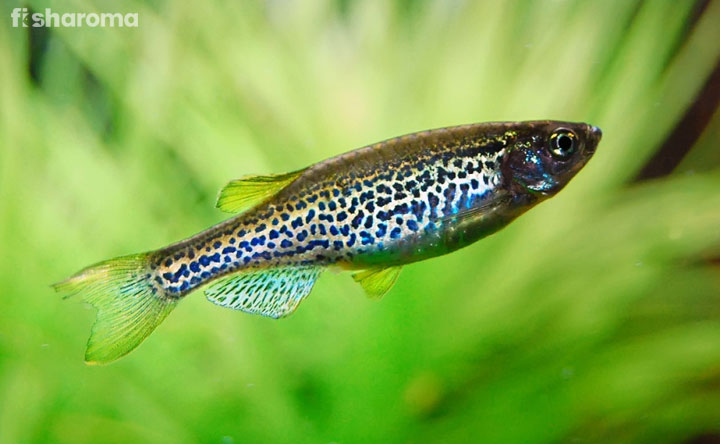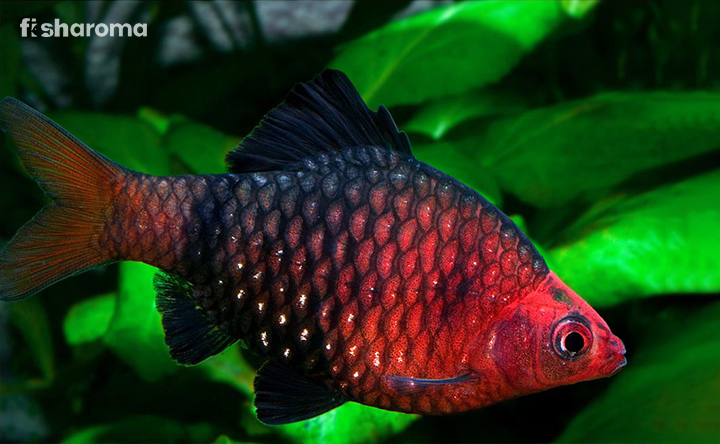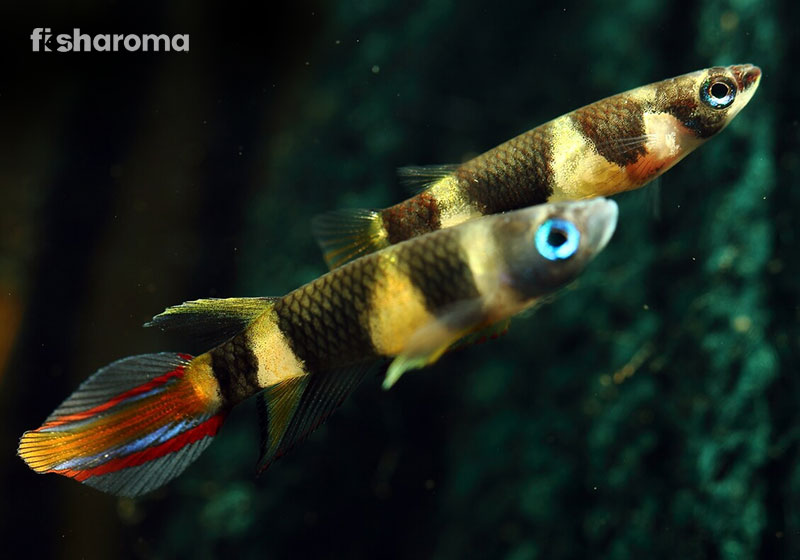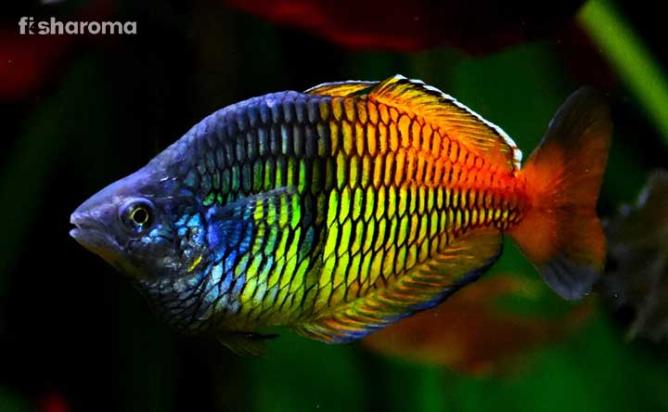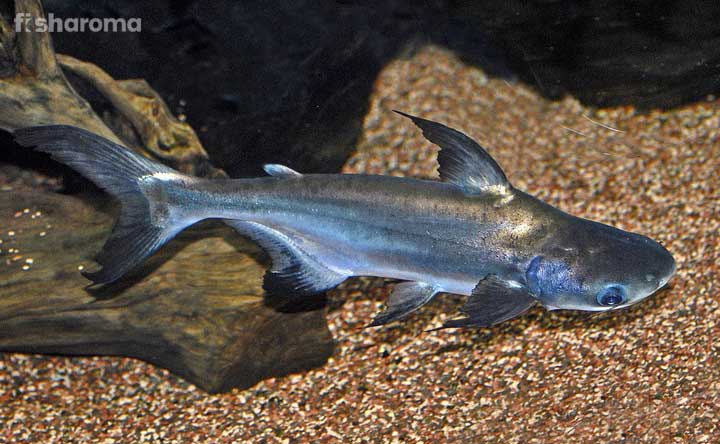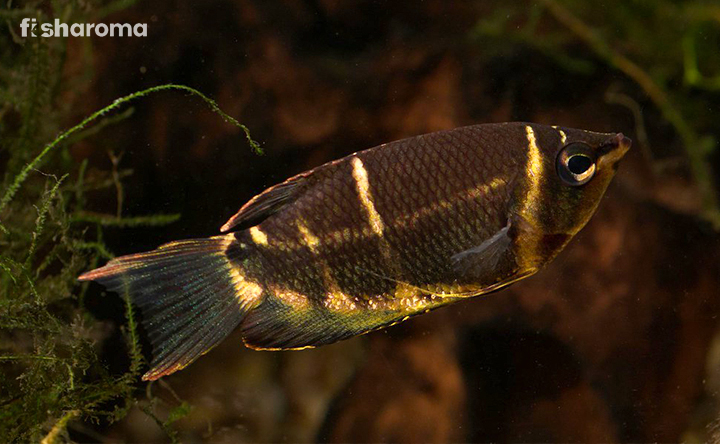Otocinclus Catfish – A Complete Care Guide of This Avid Algae Eater
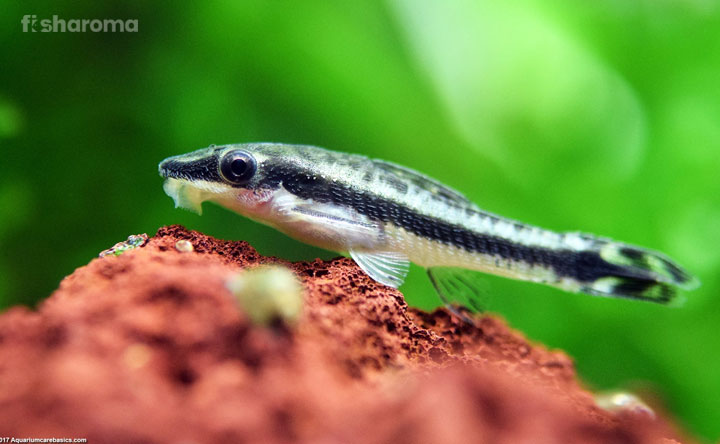
- Origin and Habitat of Otocinclus Catfish
- Appearance of Otocinclus Catfish
- Types of Otocinclus Catfish
- Behavior of Otocinclus Catfish
- Lifespan of Otocinclus Catfish
- Diet of Otocinclus Catfish
- Tank Requirements of Otocinclus Catfish
- Water Type for Otocinclus Catfish
- Compatibility of Otocinclus Catfish
- Breeding of Otocinclus Catfish
- Common Diseases of Otocinclus Catfish
- Summary
Have you ever thought how awesome it will be to keep a small, peaceful, and easy-to-care fish that eats your aquarium algae along with being beautiful? Sounds like a compact package? Well! That’s true. Otocinclus Catfish is a beginner’s friendly fish that offers all the features new aquarists generally look for.
The experienced fish-keepers also keep this fish to clean excess algae. This care guide will help you raise this fish healthily.
Key Specifications of Otocinclus Catfish
Before knowing the fish and its requirements in detail, have a quick look to its key specifications:
| Scientific Name | Otocinclus |
| Family | Loricariidae |
| Origin | South America |
| Size | 1-2” (2.5-5.1 cm) |
| Color | Brown stripes in grey body |
| Care Level | Easy |
| Lifespan | 3-5 years |
| Temperament | Peaceful |
| Compatibility | Large |
| Tank Size | 10-20 gallons |
| Diet | Herbivore |
Overview
Otocinclus Catfish are from the Loricariidae family, and they are also known as Oto, Oto Cat, Dwarf Suckers, Midget Sucker Fish, Dwarf Sucker-Mouths, Oto Catfish, Algae Scraper, Dwarf Oto, and so on. Aquarists mostly try to get a beautiful and colorful fish in their aquarium, and it comes with an additional advantage of algae cleaning, and maybe this is the reason behind the popularity of this fish right now.
This bottom-dwelling and least demanding fish also seek minimum care of aquarists and can tolerate a good range of temperature and pH.
Origin and Habitat of Otocinclus Catfish
This fish is available in large numbers in South America, especially the rivers of North Argentina, Colombia, Paraguay, Brazil, Peru, and Venezuela. Unlike other South American fish, the availability of this fish in the Amazon River basin is negligible. Small streams and shallow lakes and rivers are their favorites in nature.
Appearance of Otocinclus Catfish
It is a fish with a cupule-shaped mouth, and the body of this fish is thick towards their belly and narrows towards the head and caudal fin. Their eyes are large and olive-brown, and it looks much like a Siamese Algae Eater.
The armor plating in their body protects them from large fish and sharp-edged aquarium decors. Along with this, their breathing technique is very complicated, which hinders them from breathing sufficiently. The hollow area between the esophagus and stomach allows them to breathe.
Size of Otocinclus Catfish
It is a small fish, and they grow only 2” (5.08 cm) when matured. Females look larger than males, and this makes the breeding process even more critical.
Color of Otocinclus Catfish
Generally, it has a white or grey body with brown stripes. However, the color of stripes differs in different types.
Types of Otocinclus Catfish
According to the shades of brown, there are nearly 20 types, but the following types are the most popular ones for aquarium use:
Common Oto
As the name suggests, it is the widely available Otocinclus Catfish in the world. The body of Common Oto (Otocinclus vittatus) is white, and on the upper portion, you can find numerous brown dots. Along with transparent fins, you can find a brown stripe that runs through the sides.
Golden Oto
It is a look-alike of Common Otocinclus with a little difference. Brown stripe and dots turn golden brown in Golden Oto (Otocinclus affinis).
Dwarf Oto
This particular variant has similarities with the previous two, but its length is enough to differentiate them. The adult Dwarf Oto (Otocinclus macrospilus) is only 1” (2.5 cm).
Their caudal fin has a different coloration as the brown stripe becomes pale towards the caudal fin. The tail of Dwarf Oto has a dark brown, patch which makes its appearance more beautiful.
Silver Oto
It does not have much difference in appearance with previous ones. The only difference is the brown, or golden patches turn silvery in Silver Oto (Otocinclus vestitus).
Zebra Oto
It is not that difficult to guess the pattern of this fish from the name. Yes, Zebra Oto (Otocinclus Cocama) has black and white stripes vertically in its body and horizontally in its head. Sometimes the white looks golden brown to yellow, and they are called Tiger Oto for that.
You will need expert’s eyes to identify these types of Otocinclus Catfish as the differences of color and blotches are pretty hard to notice.
Behavior of Otocinclus Catfish
It is a peaceful fish that never fights, and it has only one serious concern throughout life – eating algae. However, it gets scared very easily, especially when kept with large species.
These bottom-dwellers hardly come towards the surface, but when they come, it is because of algae deficiency on the aquarium base, wall, and substrates.
Lifespan of Otocinclus Catfish
Its lifespan is 3-5 years with a healthy diet and fulfilled tank and water requirements. Wild-caught Otos live shorter than captive-bred ones. So, try to buy a captive bred one from the pet store. Now let’s move on to the next section to know how to raise this fish.
Diet of Otocinclus Catfish
It was mentioned at the very beginning that it is an algae eater. Your fish will not judge whether that algae are healthy or not – it will consume the algae. But they are pretty selective to algae – they don’t eat old algae and consume only fresh algae.
It is the herbivorous fish, so you need to be extra careful at the time of selecting ready-made food for them. Algae wafer will be a good choice but avoid the cheap quality ones.
You don’t need to worry if your fish is not consuming outside foods as it considers algae of an aquarium as its only food. Be sure to remove the uneaten foods after a few hours of feeding to prevent nitrate formation.
Experts opine that these fish keep eating all day, so outside food should be healthier. Green vegetables work best for Otocinclus Catfish. You can cook using zucchini, lettuce, and spinach.
Nutrients
Keep in mind that vitamins, minerals, lipids, amino acids, fatty acids, and phospholipids all are required for its growth, and outside veggies and fruits will supply these elements.
- Unlike other fish, you will have to feed it twice a day, keeping a gap of 10-12 hours in a very small quantity.
- You can keep the tank close to the window since it will supply sunlight and help to grow sufficient algae in the tank.
- It is not so efficient to identify outside food, so a large slice of fruit or vegetable (cucumber or zucchini) can be dropped to help them in identifying the food. It has to be picked up after 24 hours if not finished.
That’s about diet; now, let’s move on to its tank requirements.
Tank Requirements of Otocinclus Catfish
In order to grow a healthy Otocinclus Catfish, you will have to maintain its tank requirements. Read the following and be a pro of keeping this algae eater.
Tank Size
This fish is perfect for your nano-aquarium as it is a small fish. You can put a shoal of 4-6 fish in a 10-gallon tank; however, a bigger (20-gallon) tank will be better for more than six. Try to keep it in a flat but wide aquarium, not in narrow and tall one. The wider surface area will be easy to look after this fish, but it is not recommended for a brand new tank.
Substrate
They stick to the substrate all the time with their strong mouth, so provide a soft sandy substrate by replicating their natural habitat. You will have to avoid the coarse grains or sharp-edged rocks as it is bottom-dwelling fish. Be sure there are plenty of algae on the substrates.
Aquatic Plants
You may think that this fish will consume your aquatic plants as it is herbivorous fish. Well, specifically, it is an algae eater, and it hardly has any intention to destroy your aquatic plants.
Staurogyne repens can be planted along with slow-growing plants. Cryptocorynes, Echinodorus, Anubias, Cabomba, Pygmy Chain Sword, Java Moss, and Java Fern will be good too.
Filter
Slow-moving and clean water is their first preference, though they can live in a tank full of algae. A good canister filter and the standard pump will be alright to keep the tank clean and oxygenated.
Lighting
You can use any standard lighting, but be sure to turn off the light for 8-10 hours a day to control algae growth – 12 hours lighting is minimum required here.
Décor
They like to stick to the aquarium decors like rocks and woods even though these items move with water. Caves are important to provide them shelters and keep them stress-free. Ceramic tubes, rounded stones, and bogwood will be good additions too.
Water Type for Otocinclus Catfish
If you strictly maintain the water parameters, you will be able to maximize its lifespan. Take a look at the guidelines.
Temperature, pH Level and Hardness
72-79°F (22.2-26.1°C) will be the ideal temperature for this fish. It prefers slightly warm water, but not more than 80°F (26.6°C). pH level has to be 6.8-7.5, with the hardness of 15dH will be ideal for this fish.
Nitrate Level
Try to keep the level of nitrate as low as possible. Below 20ppm will be great; however, adding this fish in a tank that had completed the nitrogen cycle will be better because of shortage of algae there.
Cleaning Methods
Avoid any soap or chemicals for cleaning. Filter and siphon cleaning will be much better for the health of this fish.
Adding this fish in an extremely clean and algae free aquarium will kill this fish, so be sure not to clean algae completely with algae scrubber.
Even though they need clean water, you have to keep some waste products too to enhance the growth of algae and save the fish from starvation.
Replacement Procedure
10% water change every week or 20% water change after 15 days will be very helpful here. But try to avoid a lot of change at a time because this fish is intolerant to that.
As they eat the entire day, they will excrete more, which will supply ammonia in water. So water change is mandatory.
Compatibility of Otocinclus Catfish
As it is a shoaling fish, avoid keeping it single – keep it in a group of at least 4-6. It is comfortable in large shoals, so if you have a large tank, you can add more than six. If you want to keep this fish in community tanks, the following section can help you.
Suitable Tank Mates of Otocinclus Catfish
It will not be an issue to keep Otocinclus Catfish (single or shoal) with any peaceful and small fish or invertebrates. Following are the some the best tank mates of this fish:
- Corydoras Catfish
- Dwarf Gourami
- Honey Gourami
- Rainbow Shark
- Molly
- Guppy
- Tetra
- Zebra Loach
- Kuhli Loach
- Danio
- Cherry Barb
- Harlequin Rasbora
- Bristlenose Pleco
- Amano Shrimp
- Dwarf Shrimp
- Bamboo Shrimp
- Snails
Unsuitable Tank Mates of Otocinclus Catfish
Any large and aggressive fish will eat Otos, so they should be avoided. Also, the deep-bodied fish are unsuitable as Otocinclus Catfish often attach to them. The most unsuitable tank mates of this fish are:
- Any cichlid
- Oscar fish
- Goldfish
- Assassin Snail
- Angelfish
- Jack Dempsey
- Discus Fish
Breeding of Otocinclus Catfish
This fish is difficult to breed in an aquarium. First of all, you have to feed very healthy food before breeding and increase the temperature to indicate the time to mate. Some aquarists have mentioned that they provided a high protein diet of Brine Shrimp, Daphnia, and Grindal Worms before breeding.
At the time of breeding, males will chase the females and fertilize the eggs when females start laying eggs on plant leaves. Before mating, the males smell the females like dogs before fertilizing the eggs.
It will take 2-3 days to hatch the fries, and they will learn to consume algae shortly after that. They will grow very fast and learn to eat like adults.
Common Diseases of Otocinclus Catfish
It prefers a tank with excess algae, but all of a sudden, after cleaning the tank, you may see a dead Otocinclus Catfish just because of excess algae removal. This problem occurs when you keep it in a community tank where others may have health problems due to algae.The fish often get stressed due to lack of algae, polluted water, and unhealthy food.
How to Prevent?
You need to be a good observer to understand the signs of illness like color change, fast respiration, loss of appetite, wounds, and dark spots. They can rise to the aquarium surface to breathe directly from the air to indicate a lack of oxygen in the aquarium.
However, maintaining water parameters and cleaning tanks will combat most of these diseases. You cannot compromise water quality, so water testing is also required, and resolving the issues will cure the diseases.
Diseases with Symptoms, Causes and Cures
Here are the common diseases of this fish with their symptoms, causes, and cures:
| Name of the disease | Symptoms | Causes | Cures |
| Cotton mold | Cottony growth on fins and body. | Saprolegnia fungus | Application of copper sulfate, malachite green sodium chloride, and formalin hydrogen peroxide. |
| White spot | 1. White spot on the whole body and gills. 2. Rubbing body against substrates. 3. Loss of appetite Isolation. | Protozoan disease | 1. Temperature change. 2. Application of aquarium salt, formalin and malachite green. |
| Gold dust/ Velvet disease | 1. Dusty yellow patches on the body. 2. Lethargy Rubbing body on the substrates. 3. Loss of appetite 4. Difficulty in breathing. 5. Excessive movements on the gills | Parasitic disease | Application of methylene blue, acriflavine, copper sulfate, and malachite green. |
| Roundworms | 1. Organ dysfunction. 2. Shrinking belly. 3. Loss of appetite 4. Lethargy | Poor water quality | 1. Soak food in thiabendazole. 2. Add levamisole or parachlorometaxylenol in water |
As it is a very small fish, you will need to consult an expert in case adjusting water parameters does not cure it.
Summary
So, Otocinclus Catfish is definitely one of the best choices for beginners as it needs limited space and minimal care. You will not need to get a variety of food for this fish, as well. This fish will readily consume green algae, fuzz algae, green dust algae, and brown algae from the aquarium. It is very sensitive to their food, so you need to beware of excess cleaning.
It will be a great addition to the community tank of small and colorful fish since it will reduce your effort by eating algae there. So, the inclusion of Otocinclus Catfish not just strengthens the algae defense squad but also makes the aquarium more attractive.
Interesting Facts about Otocinclus Catfish
- In nature, Otocinclus Catfish swim in a shoal of more than 1000-1200 with the Corydoras and eat broad-leaved grasses and macrophytes along with algae.
- Apart from eating, you will see them interacting with each other if they are kept in a shoal of 6-8 in an aquarium.
- They will hang off your aquarium glass, and you will be able to see their suckermouth.
- This fish gets used to intake food from plate or bowl (if you have done the same 9-10 times previously to help them to locate the food) and keeps checking the container several times if the aquarium has insufficient algae.
- Seven days after laying eggs, females can lay eggs again.
Some Other Algae Eaters
If you are looking for some more algae eaters, the following articles will help you:
- Siamese Algae Eater – If you want a fish that needs minimum care that comes with the benefit of algae-eating and know how to care for this silvery jewel of a freshwater aquarium.
- Best algae eaters – Know the best algae eating fish, crabs, shrimps, and snails with their care tips.

